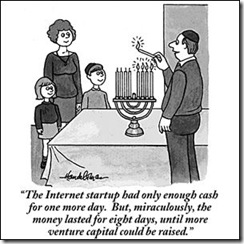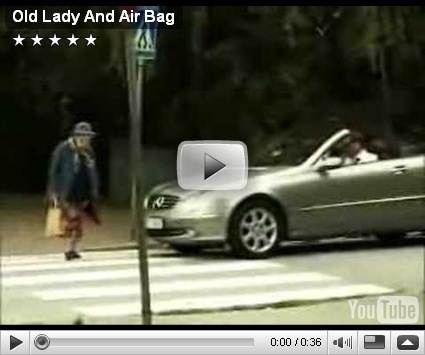
I recently read Brian Greene’s
The Fabric of the Cosmos, in which Greene describes, in lay and non-mathematical terms the major themes of physics and cosmology. Catapulting from the classical physics of Newton, Maxwell etc, Greene launches first into relativity, then quantum mechanics and on into inflationary cosmology and string theory. His style is engaging, even entertaining, and, nonetheless, very informative. I even know why the physicists of the
Large Hadron Collider in Europe are chasing after the
Higg’s Boson and what it is, more or less.
As a cyclist, all this has direct and immediate consequences. For example, and with a tip of the hat to
Douglas Adams, if we live in an 11 dimensional universe should a bicycle have more wheels?
My favorite diversion born of these considerations tells me that as well as the health benefits of cycling, the relativistic effects of riding are also keeping me younger than any stationary types. This is based on Einstein’s theory of relativity which notes that the clock of someone travelling at speed will run slower than the clock of someone stationary. I posited this when out cycling with friends on Sunday, cleverly within earshot of
Kenny Breuer, a professor at Brown University, and a regular in our Sunday morning cycling group. Sure enough he rose to the bait.
On one leg (or two wheels), he suggested the following approximation, to within an order of magnitude (meaning we are only using numbers that start with a 1 and have some number of zeros – like ten, a thousand, a billion, or a tenth or a thousandth etc). As an example, and introducing scientific notation for very large and very small numbers, the speed of light is 3E+08 meters per second (spoken three times ten to the eight, or three times ten to the eighth power). This is the notation for three times the number 1 with 8 zeros, which equals 3x100,000,000 or 300,000,000 m/s. To within an order of magnitude, this is simplified(!) to 1E+08 (we ignore the 3 altogether as you are about to see).
We start with noting that we are travelling at 10 meters per second (a kilometer every 100 seconds or a mile in three minutes is a grossly optimistic approximation, but is accurate to within an order of magnitude). The speed of light, as we noted, approximates to 1E+08 m/s. Hence we are travelling at 1E-07 of the speed of light. (The negative number means this has 7 zeros before the 1 – meaning we are travelling at 0.0000001 times the speed of light).

Kenny assures me the relativistic effects are the square of the fractional speed, so the relativity impact is the square of 1E-07, meaning 1E-14. If we are riding at this speed for three hours, then this is approximately 10,000 seconds (or 1E+04 seconds). Hence the change in our clock, compared to someone stationary, is 1E+04 times 1E-14 or 1E-10 seconds. This is one tenth of a nanosecond, and as anyone who works in computers knows, nanoseconds add up. One thousand nanoseconds is a millisecond, and everyone notices when there are more than a few milliseconds of delay on a Skype video call.
I know the approximations overstate the results (the speed of light is faster, we are travelling slower), but being able to do the simple exponent-of-ten math while cycling makes up for the lost accuracy with warm feelings of satisfaction.
I was hoping Wolfram Alpha would be able to provide a complete schematic for confirming this calculation, and I typed in
relativistic effects on time of travelling at 14 mph for 3 hours. Unfortunately it did not understand me. Surely this kind of thing is a commonplace(!)











